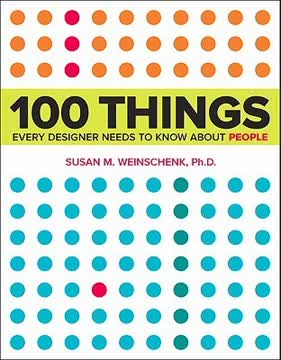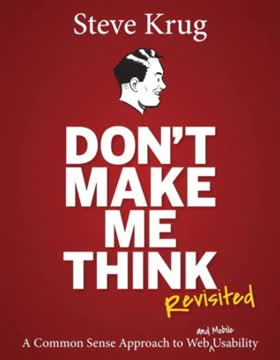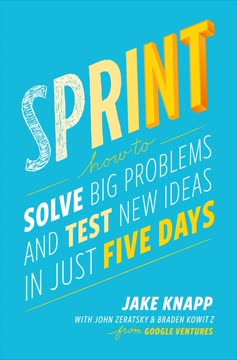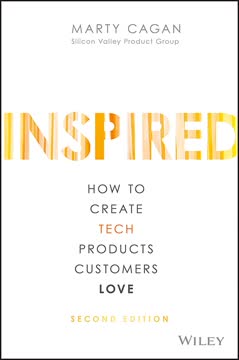Key Takeaways
1. Design thinking is a human-centered approach to innovation
Design thinking taps into capacities we all have but that are overlooked by more conventional problem-solving practices.
Human-centered innovation. Design thinking places people at the center of the innovation process. It focuses on understanding their needs, behaviors, and motivations to create solutions that are not only functional but also emotionally resonant. This approach goes beyond traditional problem-solving methods by incorporating empathy, creativity, and iterative experimentation.
Balancing desirability, feasibility, and viability. Design thinking seeks to find the sweet spot where human needs (desirability) intersect with technical possibilities (feasibility) and business requirements (viability). This holistic approach ensures that innovations are not only groundbreaking but also practical and sustainable.
Key elements of design thinking:
- Empathy: Understanding users' needs and experiences
- Ideation: Generating a wide range of creative solutions
- Prototyping: Rapidly creating tangible representations of ideas
- Testing: Gathering feedback and refining solutions
2. Observation and empathy are crucial for understanding user needs
The real goal, then, is not so much fulfilling manifest needs by creating a speedier printer or a more ergonomic keyboard; that's the job of designers. It is helping people to articulate the latent needs they may not even know they have, and this is the challenge of design thinkers.
Deep user understanding. Design thinkers go beyond surface-level market research to uncover hidden needs and desires. They observe people in their natural environments, paying attention to workarounds, frustrations, and unspoken behaviors. This deep empathy allows them to identify opportunities for innovation that might otherwise be overlooked.
Insights from extreme users. Design thinkers often seek out "extreme users" – those who push the boundaries of typical use cases. By studying these outliers, they can gain valuable insights that apply to a broader user base. For example, observing how professional athletes use sports equipment can lead to innovations that benefit amateur players.
Techniques for gathering insights:
- Ethnographic research: Immersing in users' environments
- Shadowing: Following users through their daily routines
- In-depth interviews: Exploring users' thoughts and motivations
- Analogous inspiration: Drawing insights from seemingly unrelated fields
3. Prototyping and iterative refinement are key to successful design
Prototyping is always inspirational—not in the sense of a perfected artwork but just the opposite: because it inspires new ideas.
Rapid prototyping. Design thinkers believe in making ideas tangible as quickly as possible. By creating low-fidelity prototypes early in the process, they can test assumptions, gather feedback, and refine concepts before investing significant resources. This approach allows for faster learning and reduces the risk of pursuing unviable solutions.
Iterative improvement. The design thinking process is inherently iterative. Each prototype serves as a learning opportunity, generating new insights that inform the next iteration. This cycle of build-test-learn allows for continuous improvement and helps navigate complex problem spaces.
Benefits of prototyping:
- Reveals unforeseen challenges and opportunities
- Facilitates communication and alignment among stakeholders
- Encourages experimentation and risk-taking
- Accelerates the path to viable solutions
4. Storytelling and visualization help communicate and refine ideas
Visual thinking takes many forms. We should not suppose that it is restricted to objective illustration. In fact, it is not even necessary to possess drawing skills.
Power of visual communication. Design thinkers use various visual tools to express and explore ideas. Sketches, diagrams, storyboards, and other visual representations help make abstract concepts tangible and facilitate shared understanding among team members and stakeholders.
Narrative as a design tool. Storytelling is not just for presenting final ideas; it's an integral part of the design process. By crafting narratives around potential solutions, design thinkers can explore different scenarios, identify potential pitfalls, and create emotional connections with users and stakeholders.
Visual thinking techniques:
- Mind mapping: Organizing and connecting ideas visually
- Customer journey mapping: Visualizing user experiences over time
- Scenario planning: Illustrating potential future states
- Infographics: Presenting complex data in an accessible format
5. Collaboration across disciplines enhances creativity and problem-solving
Design thinking is the opposite of group thinking, but paradoxically, it takes place in groups.
Interdisciplinary teams. Design thinking thrives on diverse perspectives. By bringing together people from different backgrounds – designers, engineers, marketers, anthropologists, and more – teams can approach problems from multiple angles and generate more innovative solutions.
Collaborative creativity. The design thinking process encourages active participation from all team members. Techniques like brainstorming and co-creation workshops harness collective intelligence and foster a culture of shared ownership over ideas.
Strategies for effective collaboration:
- Cross-functional teams: Assembling diverse skill sets and perspectives
- Collaborative workspaces: Creating environments that encourage interaction
- Facilitation techniques: Using methods like "yes, and" to build on ideas
- Shared language: Developing common vocabulary and frameworks
6. Design thinking can be applied to tackle complex social issues
Design thinking needs to be turned toward the formulation of a new participatory social contract.
Expanding impact. Design thinking is not limited to product development or business innovation. Its principles can be applied to address complex social challenges, from healthcare and education to environmental sustainability and poverty alleviation.
Human-centered social innovation. By applying empathy, systems thinking, and iterative problem-solving to social issues, design thinkers can create solutions that are more effective and sustainable. This approach often involves co-creating with communities and stakeholders to ensure solutions are culturally appropriate and locally owned.
Examples of design thinking in social impact:
- Redesigning healthcare experiences to improve patient outcomes
- Developing low-cost, sustainable technologies for underserved communities
- Creating innovative educational models to address learning gaps
- Designing systems for more efficient resource distribution in disaster relief
7. Embracing constraints and failure leads to breakthrough innovations
Constraints can best be visualized in terms of three overlapping criteria for successful ideas: feasibility (what is functionally possible within the foreseeable future); viability (what is likely to become part of a sustainable business model); and desirability (what makes sense to people and for people).
Creative constraints. Design thinkers view constraints not as limitations but as creative catalysts. By embracing constraints – whether technical, financial, or cultural – they can focus their efforts and often discover unexpected solutions.
Learning from failure. In design thinking, failure is seen as a valuable learning opportunity. By encouraging experimentation and rapid prototyping, teams can fail early and often, gaining insights that lead to more robust final solutions.
Strategies for leveraging constraints:
- Reframing limitations as opportunities for innovation
- Using artificial constraints to spark creativity in brainstorming sessions
- Conducting "pre-mortems" to anticipate potential failures
- Celebrating and learning from unsuccessful experiments
8. Design thinking is a mindset that can be cultivated by individuals and organizations
Design thinking can be practiced by everybody. There is no reason why everyone, up to and including the "C-level"—CEOs, CFOs, CTOs, and COOs—cannot master these thought processes as well.
Democratizing innovation. Design thinking is not reserved for trained designers. It's a mindset and approach that can be learned and applied by individuals across all levels and functions of an organization. By cultivating these skills broadly, companies can create a culture of innovation that permeates the entire organization.
Organizational transformation. Implementing design thinking often requires shifts in organizational structure, processes, and culture. This may involve creating dedicated innovation spaces, adjusting performance metrics to encourage experimentation, and fostering a more collaborative work environment.
Ways to cultivate design thinking:
- Training programs and workshops for employees at all levels
- Creating cross-functional innovation teams
- Establishing innovation labs or dedicated spaces for experimentation
- Integrating design thinking principles into organizational processes and decision-making
9. The future of design thinking lies in addressing global challenges
If we are to deal with what Bruce Mau has called the "massive change" that seems to be characteristic of our time, we all need to think like designers.
Scaling impact. As the world faces increasingly complex and interconnected challenges, design thinking offers a powerful approach for developing innovative solutions. From climate change to healthcare accessibility, design thinkers are applying their skills to create positive global impact.
Evolving practice. The field of design thinking continues to evolve, incorporating new technologies, methodologies, and insights. As it expands beyond traditional design disciplines, there is growing emphasis on systems thinking, sustainability, and ethical considerations in innovation.
Emerging frontiers in design thinking:
- Applying artificial intelligence and machine learning to augment human creativity
- Developing circular economy solutions for sustainable product and service design
- Creating participatory design processes for large-scale urban planning
- Integrating design thinking with other problem-solving approaches like systems thinking and lean startup methodologies
Last updated:
FAQ
What's Change by Design about?
- Focus on Design Thinking: The book delves into design thinking, a methodology that combines human needs with technological and economic feasibility. It emphasizes creating meaningful solutions rather than just focusing on aesthetics.
- Transforming Organizations: Tim Brown illustrates how design thinking can revolutionize organizations by promoting innovation and cross-disciplinary collaboration. It shows how companies can use this approach to tackle business and societal challenges.
- Real-World Applications: Through various case studies, the book demonstrates the successful application of design thinking across industries like healthcare and education, highlighting its versatility and impact.
Why should I read Change by Design?
- Innovative Approach: The book offers a fresh perspective on problem-solving, encouraging a creative and human-centered approach to innovation beyond traditional methods.
- Practical Framework: Readers gain insights into a practical framework for implementing design thinking, leading to more effective collaboration and project outcomes.
- Inspiring Stories: Compelling narratives from IDEO and other organizations illustrate the power of design thinking, motivating readers to apply these principles in their work.
What are the key takeaways of Change by Design?
- Design Thinking Principles: Key principles include empathy, experimentation, and collaboration, essential for creating innovative solutions that meet real human needs.
- Iterative Process: Emphasizes an iterative process where teams prototype and refine ideas based on feedback, uncovering unexpected insights and improving solutions.
- Cross-Disciplinary Collaboration: Highlights the value of interdisciplinary teams, which bring diverse perspectives to tackle complex challenges effectively.
What is design thinking, according to Change by Design?
- Human-Centered Approach: Design thinking is a human-centered innovation approach that integrates user needs, technological possibilities, and business success requirements.
- Three Spaces of Innovation: It involves moving through inspiration, ideation, and implementation spaces, allowing teams to explore problems, generate ideas, and bring solutions to market.
- Emphasis on Prototyping: Prototyping is crucial for testing ideas quickly and gathering feedback, helping teams refine concepts and discover new opportunities.
How does Change by Design suggest implementing design thinking in organizations?
- Create a Culture of Innovation: Foster a culture that encourages experimentation and risk-taking, empowering employees to explore new ideas and collaborate across disciplines.
- Engage in Prototyping: Emphasize prototyping to test ideas and gather feedback, using quick, low-fidelity prototypes to explore concepts and refine them based on user input.
- Focus on Empathy: Prioritize understanding user needs and experiences in research and development efforts to create solutions that resonate with people.
What role does storytelling play in design thinking according to Change by Design?
- Powerful Communication Tool: Storytelling is vital for conveying ideas and engaging stakeholders, helping teams articulate their vision and inspire others to embrace design thinking.
- Building Connections: Stories create emotional connections between users and products or services, fostering a deeper understanding of user needs and experiences.
- Facilitating Collaboration: Enhances collaboration within teams by providing a shared context for discussions, encouraging team members to share insights and perspectives.
How does Change by Design address the challenges of traditional business practices?
- Critique of Conventional Methods: Critiques traditional practices prioritizing efficiency over creativity, arguing they stifle new ideas and limit growth.
- Advocacy for Flexibility: Advocates for a flexible, adaptive approach to problem-solving, embracing uncertainty and exploring multiple possibilities.
- Encouraging Diverse Perspectives: Emphasizes the importance of diverse perspectives in overcoming challenges, involving interdisciplinary teams for more creative solutions.
What are some examples of design thinking in action from Change by Design?
- Shimano's Coasting Bikes: IDEO helped Shimano develop bicycles reconnecting adults with cycling by focusing on user experiences and needs.
- Bank of America's Keep the Change: IDEO collaborated with Bank of America to create a service encouraging saving by rounding up debit card purchases.
- Mayo Clinic's SPARC Program: Designers and healthcare professionals collaborated to improve patient experiences, exemplifying design thinking's impact on healthcare.
What are the best quotes from Change by Design and what do they mean?
- "Fail early to succeed sooner.": Emphasizes embracing failure as part of the design process, testing ideas early, and learning from mistakes to iterate and improve solutions.
- "Design thinking is about more than style.": Highlights that design thinking transcends aesthetics, focusing on solving problems and creating meaningful user experiences.
- "We need new choices.": Reflects the call for innovative solutions to global challenges, balancing individual and societal needs in a changing world.
How does Tim Brown suggest implementing design thinking in organizations?
- Start with Empathy: Begin by deeply understanding users through observation and engagement, ensuring solutions are relevant and meaningful.
- Encourage Prototyping: Create prototypes early to test ideas, gather feedback, and make necessary adjustments before full-scale implementation.
- Foster a Culture of Innovation: Cultivate an environment encouraging experimentation and embracing failure as a learning opportunity for sustained innovation.
What future trends in design thinking does Tim Brown foresee?
- Increased Focus on Sustainability: Predicts design thinking will address sustainability challenges, requiring innovation to minimize ecological impact.
- Expansion into New Sectors: Envisions design thinking applied beyond traditional industries to tackle complex global issues, requiring cross-sector collaboration.
- Emphasis on Community Engagement: Highlights the importance of engaging communities in the design process, developing effective and widely accepted solutions.
How does Change by Design define the relationship between design and business?
- Design as a Strategic Asset: Positions design as a critical asset for businesses seeking innovation and market differentiation, creating unique value propositions.
- Integration of Design and Business: Argues design should be integrated into all business strategy aspects, leveraging design thinking for competitive advantage.
- Focus on User-Centric Solutions: Centers on creating user-centric solutions addressing real needs, fostering loyalty, and driving growth.
Review Summary
Change by Design receives mixed reviews. Many praise its introduction to design thinking and real-world examples, finding it inspirational and insightful. However, some criticize the lack of practical details and overemphasis on IDEO's successes. Readers appreciate the broad applicability of design thinking but note the book's age shows in some examples. While some find it a valuable overview, others feel it's more of a sales pitch for IDEO. The writing style and organization receive both praise and criticism, with some finding it engaging and others struggling to connect with the content.
Similar Books










Download PDF
Download EPUB
.epub digital book format is ideal for reading ebooks on phones, tablets, and e-readers.




